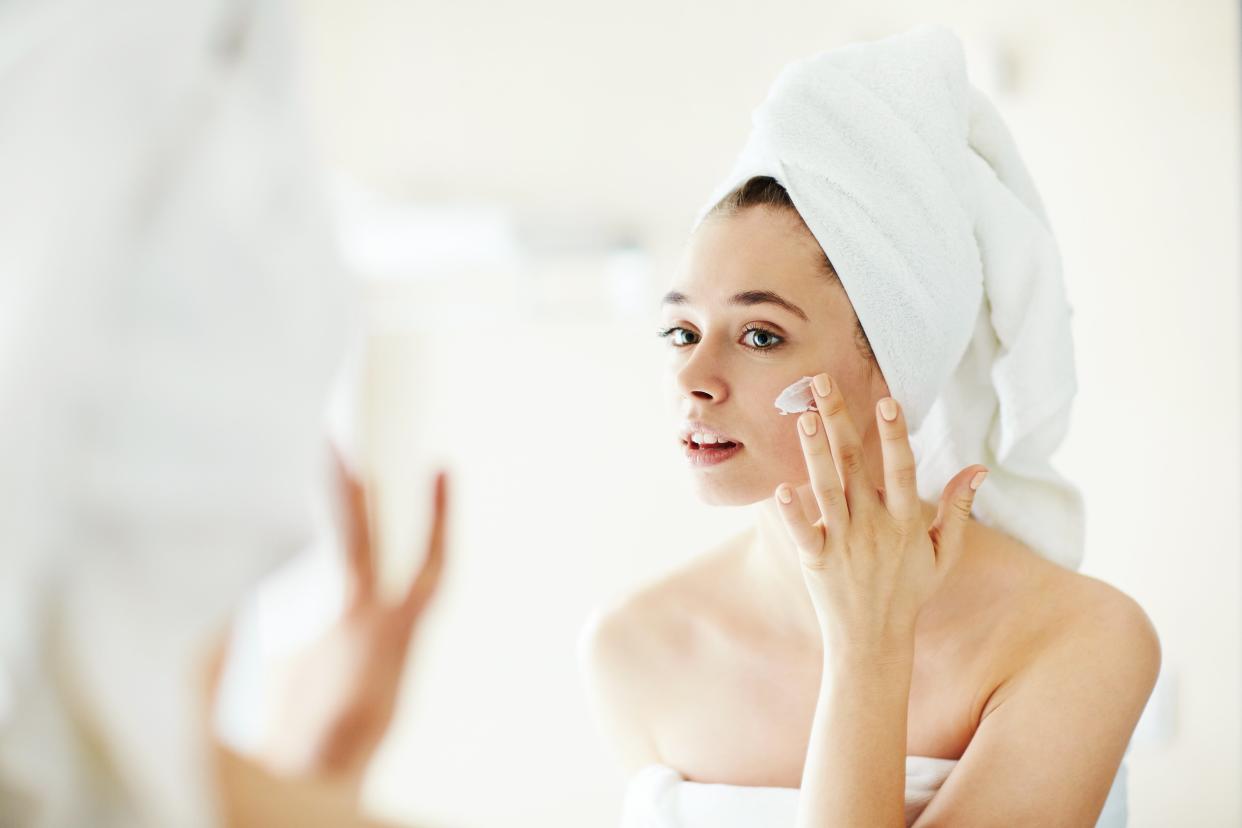From Lotions and Gels to Creams and Ointments, Consider This Your Ultimate Guide to Facial Moisturizers

Getty / shironosov
An effective moisturizer is essential to any beauty routine, but figuring out the best one for your skin type can be confusing to say the least. The reason? There are quite a few options to choose from. Moisturizers can be broken down into four different groups: lotions, gels, creams, and ointments. "The primary difference between these moisturizers is the ratio of oil and water in their formulas," explains board-certified dermatologist Dr. Marnie Nussbaum. "Ointments are primarily oil-based, while gels are mostly water-based. Creams and lotions fall somewhere in between." Ultimately, they are all formulated differently to provide the right level of hydration to complexions that run the gamut from dry and sensitive to combination to oily.
To help you determine which one is right for you, we spoke to two dermatologists. Here, they explain the individual properties and benefits of all moisturizer types, as well as how to properly apply them.
Lotions
"Lotions are typically a mix of water and droplets of oil, making them lighter in weight compared to creams," notes Dr. Melissa Kanchanapoomi Levin, a board-certified dermatologist and the founder of Entière Dermatology. Since these formulas, like CeraVe's AM Facial Moisturizing Lotion with Sunscreen ($13.69, target.com), are made of mostly water, they have a thinner consistency compared to creams and balms—and are less likely to clog your pores. They work well for combination and oily skin and can be applied daily to freshly cleansed skin; a pea sized amount smoothed gently into your complexion will do the trick.
Humectant Moisturizers (Gels)
Humectants are found in water-based moisturizers like gel creams, hydrogel creams, and oil-free lotions. The moisturizing agent is known to lock in hydration and acts as a magnet that actually attracts water. "Humectants absorb and pull in water and moisture to the top layer of the skin," explains Dr. Levin. "Gel moisturizers are chock full of hyaluronic acid (HA), one of the most powerful and effective humectants that can hold 1,000-times its weight in water," she continues. Since humectant-based formulas are generally light and airy, they should be applied first, before heavier creams. "My mantra is to always go from thinnest to thickest when it comes to applying my skin care products," says board-certified dermatologist Dr. Marnie Nussbaum. Due to their lightweight nature, they work best for acne-prone and oily skin types; try Clarins Hydra-Essentiel Cooling Gel ($49, ulta.com) or Laneige Water Bank Hydro Gel ($38, sephora.com).
Emollients (Creams)
"Emollient moisturizers tend to be thicker and more luxurious for dry skin and deliver hydration while repairing the skin barrier," says Dr. Levin. Under this category falls rich creams and balms, like SkinCeuticals Emollience Moisturizer ($63, dermstore.com), that contain fatty acids called lipids. When your complexion is dry and flaky, your skin barrier can become cracked and compromised; these lipid-rich emollients act to fill and smooth those cracks, helping to prevent further moisture loss. Emollients are particularly effective in treating dry skin with fine lines and wrinkles and can be applied over serums and under even heavier moisturizers.
Occlusives (Ointments)
While humectants pull in water, occlusives occlude (or close up) the top layer of the skin to prevent water loss. In this sense, occlusive moisturizers, including CeraVe's Healing Ointment ($19.99, target.com), provide the deepest form of hydration by acting as a shield (they don't always impart hydration, themselves) and can be found in ointments, balms, and oil-infused creams. These thick and creamy formulas contain ingredients like petrolatum, squalene, avocado oil, dimethicone, and lanolin and help to soothe and moisturize dehydrated, sensitive complexions. Since occlusives are the heaviest of moisturizers, they should be applied last to seal in moisture and protect damaged skin.

